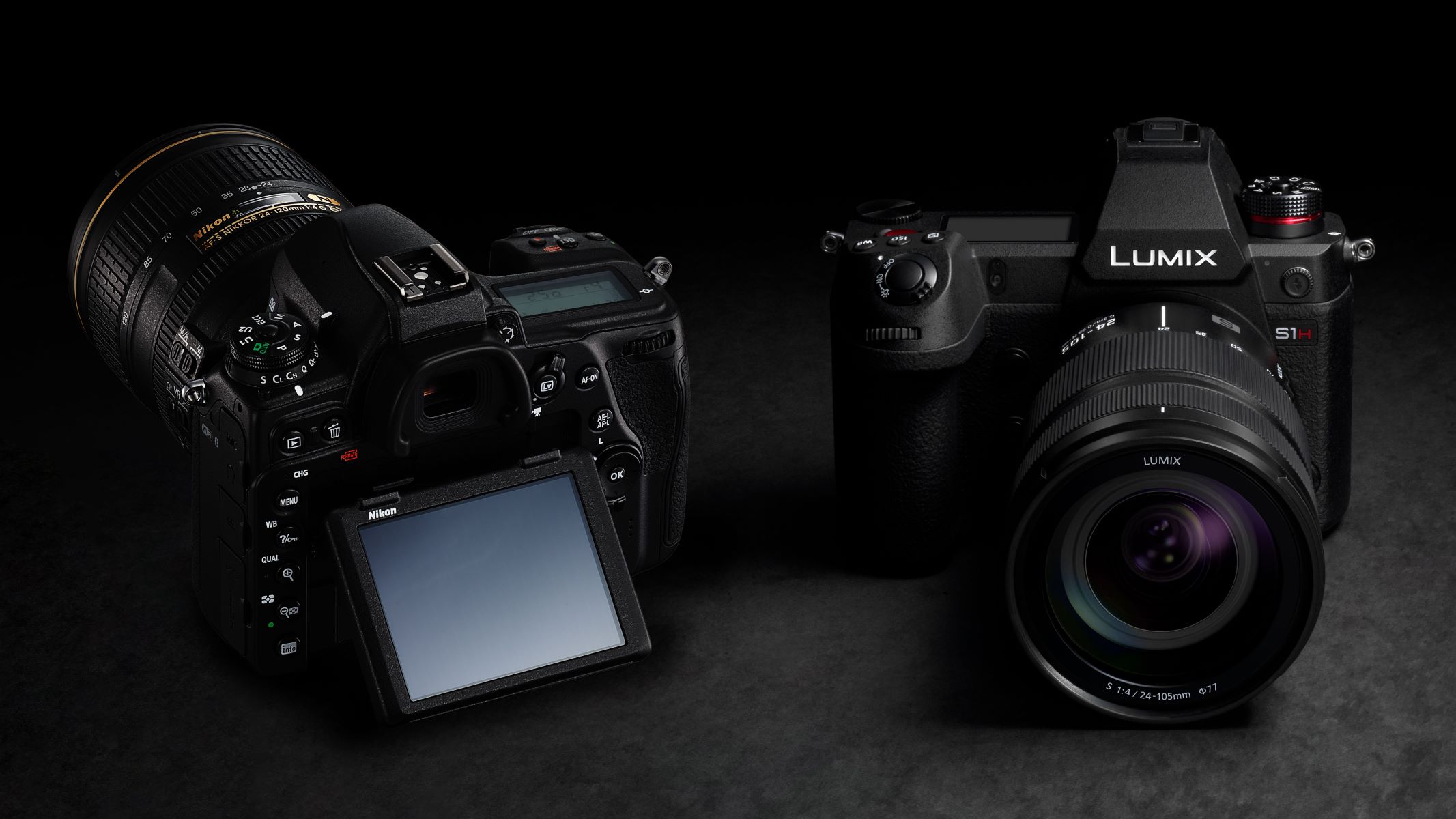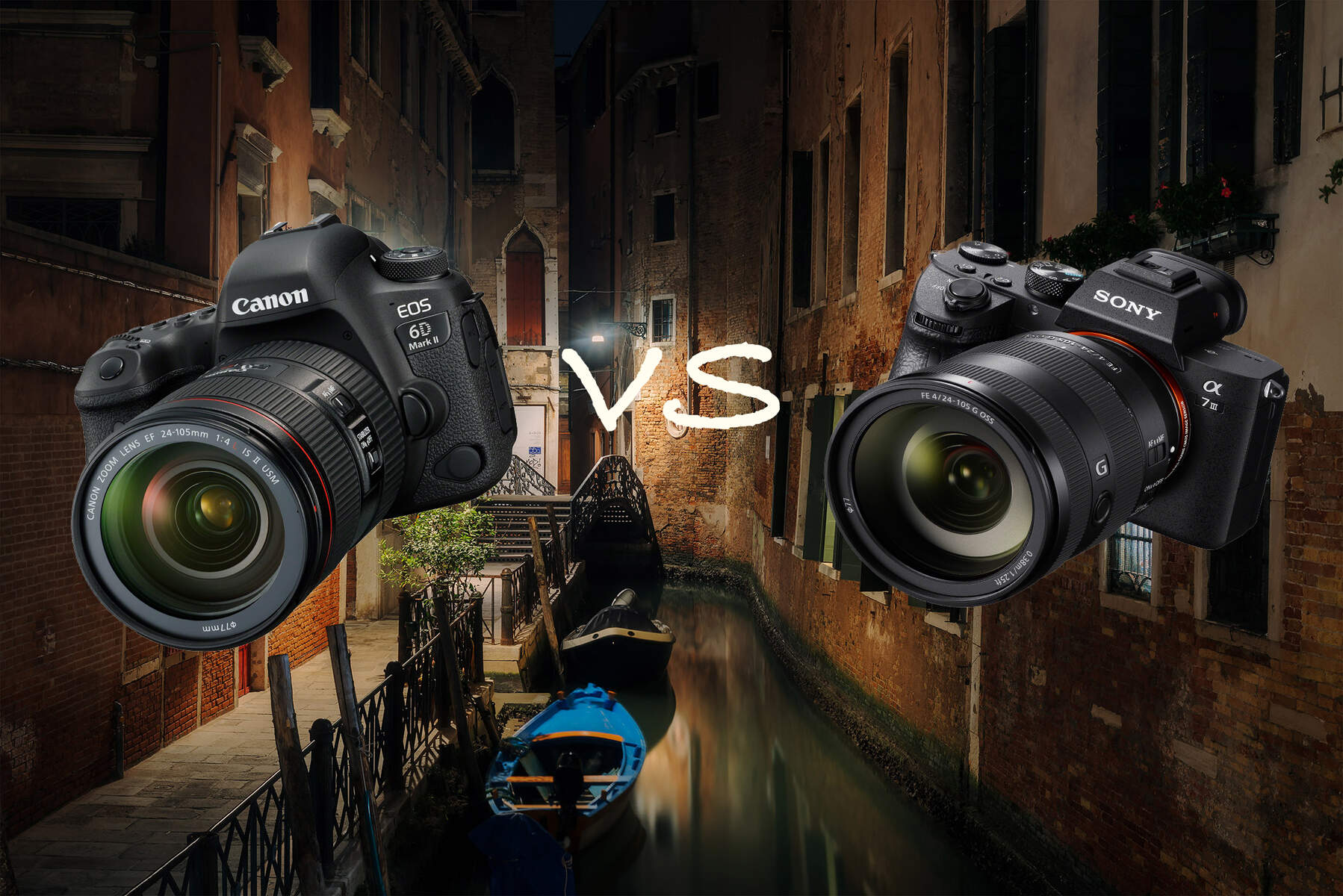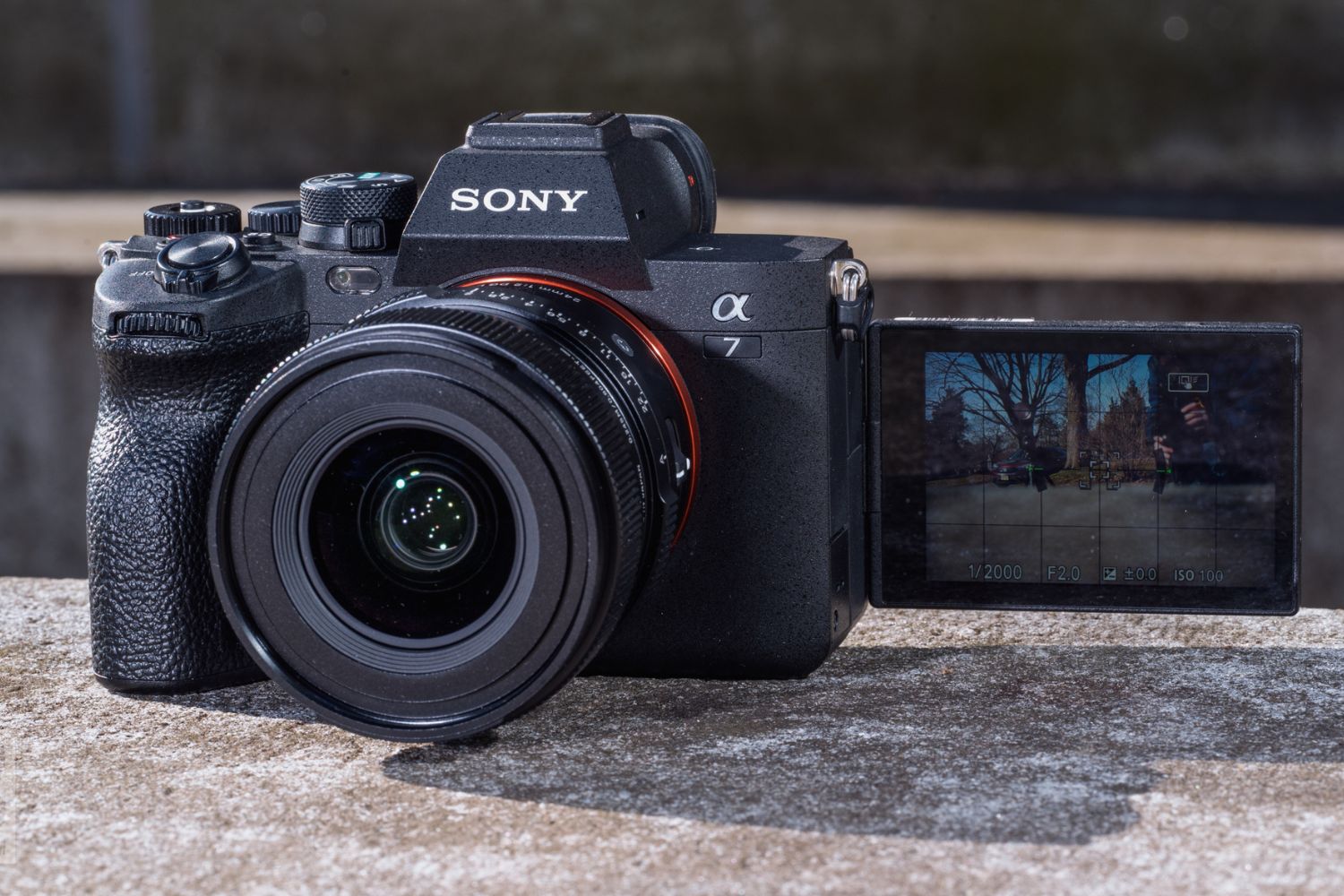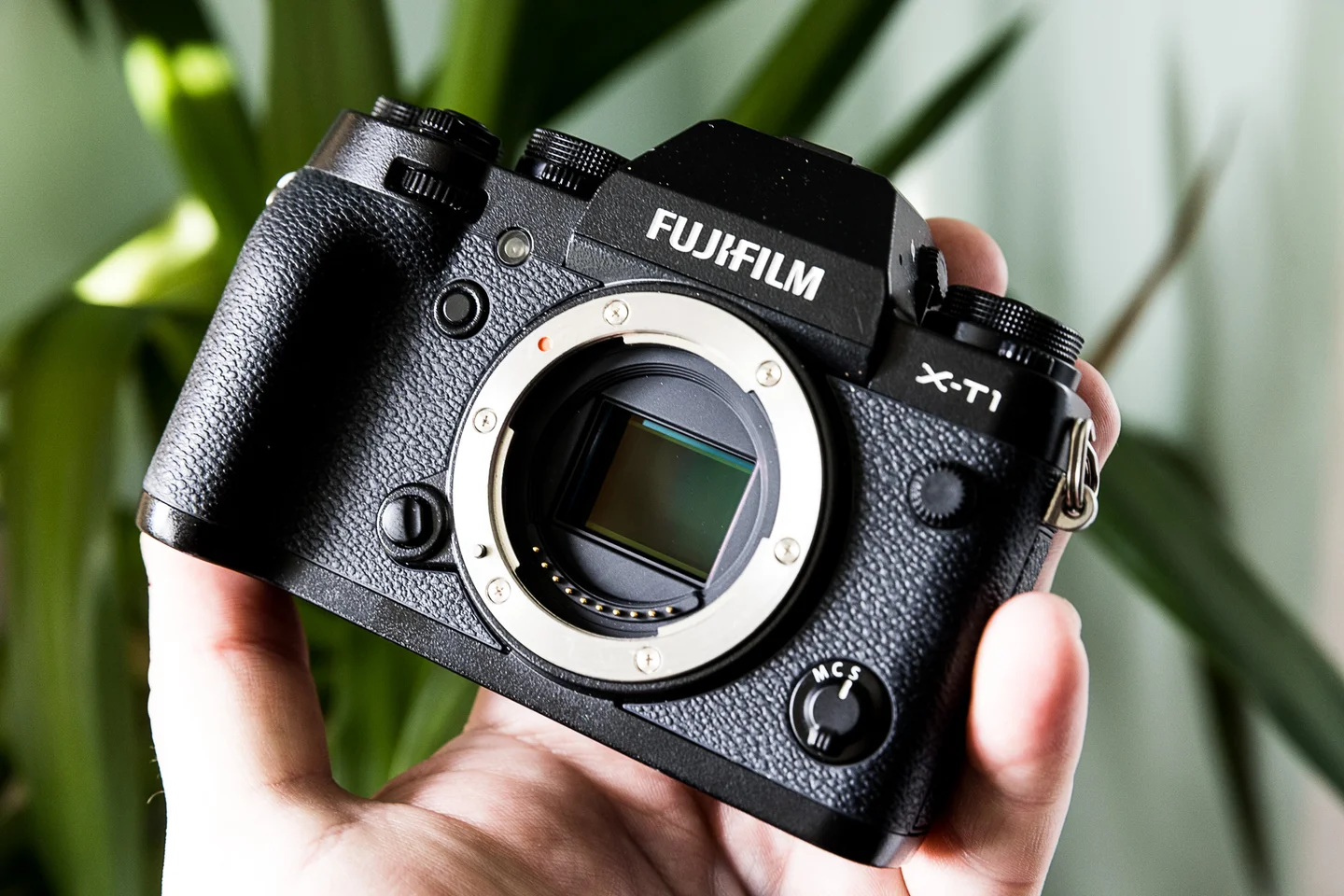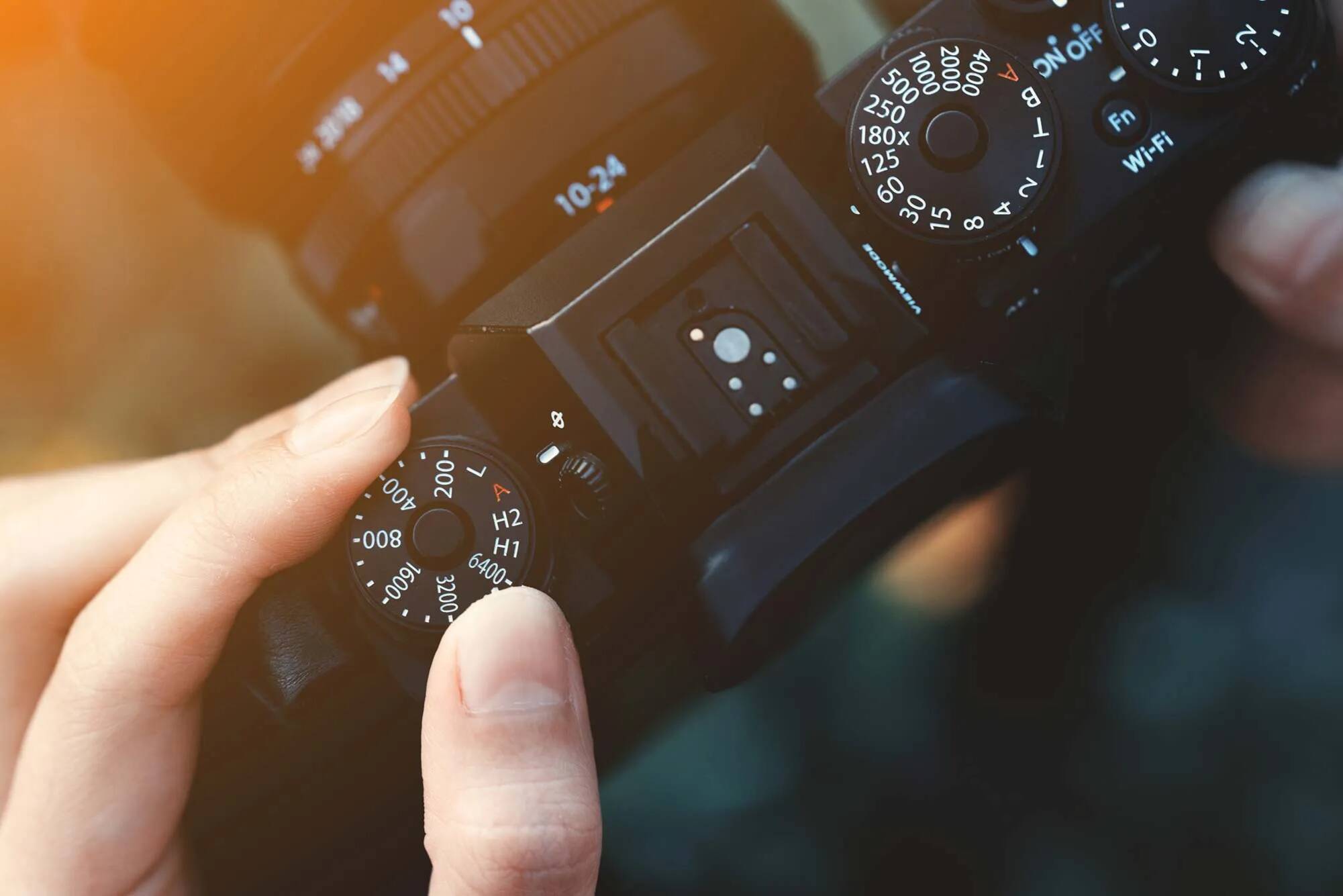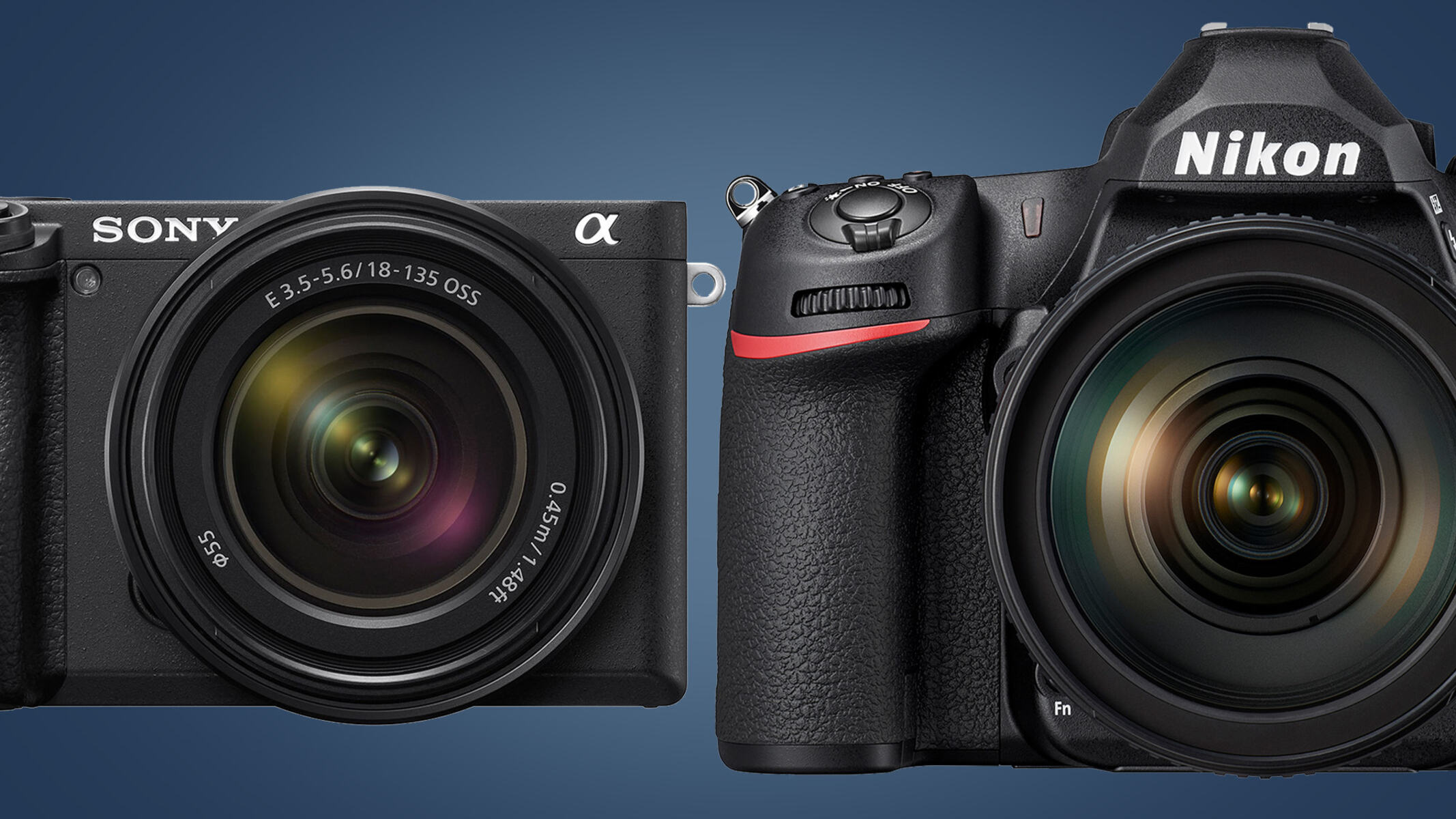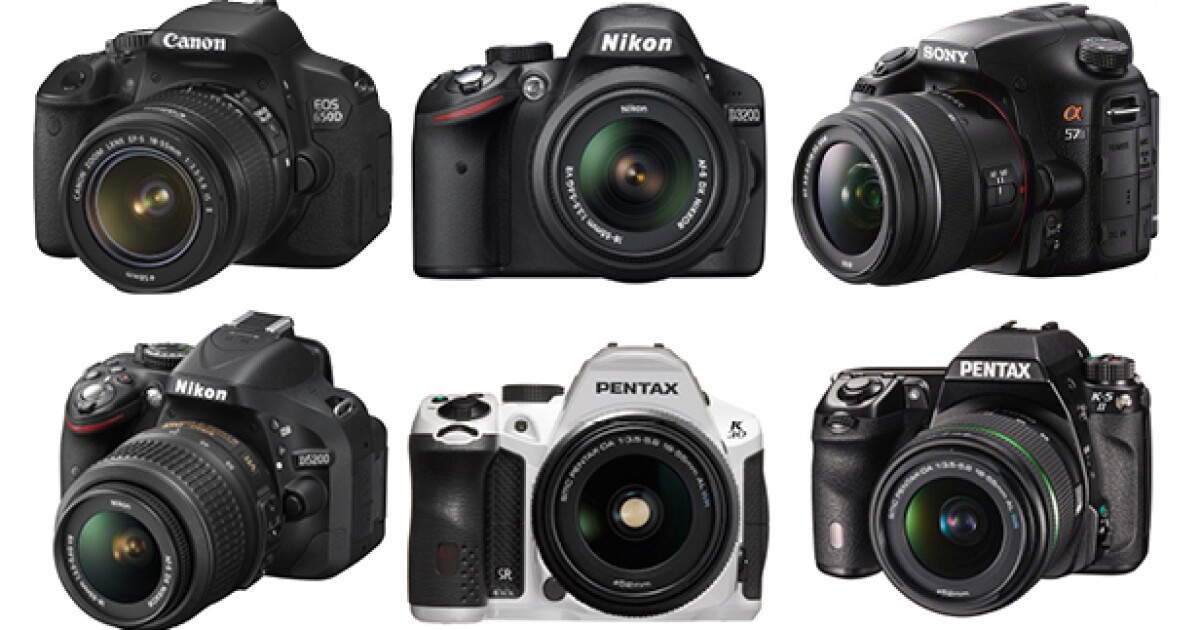Introduction
Introduction
When it comes to capturing life's precious moments, having the right camera can make all the difference. With the ever-evolving advancements in technology, photographers are faced with the age-old dilemma of choosing between a traditional DSLR (Digital Single-Lens Reflex) camera and the increasingly popular mirrorless camera. Both types of cameras have their own set of unique features and benefits, making the decision a challenging one for many enthusiasts and professionals alike.
The debate over which is better, a mirrorless or DSLR camera, has sparked numerous discussions among photography enthusiasts. Each type of camera has its own strengths and weaknesses, and understanding these differences is crucial for making an informed decision.
In this article, we will delve into the key characteristics of both DSLR and mirrorless cameras, providing an in-depth comparison to help you determine which type of camera best suits your needs. From size and weight to autofocus capabilities, viewfinders, image quality, battery life, and lens selection, we will explore the essential factors to consider when choosing between a mirrorless and DSLR camera. By the end of this comparison, you will have a clearer understanding of the distinct features of each camera type, empowering you to make an informed decision based on your unique photography requirements.
Whether you are a professional photographer seeking the best tool for your craft or an enthusiast looking to upgrade your camera gear, the mirrorless versus DSLR camera debate is an important one to consider. Let's embark on this exploration to unravel the nuances of these two distinct camera types, ultimately guiding you towards the ideal choice for your photographic endeavors.
What is a DSLR Camera?
A DSLR (Digital Single-Lens Reflex) camera is a popular choice among professional photographers and enthusiasts due to its advanced features and versatile capabilities. The defining characteristic of a DSLR camera is its internal mirror mechanism, which reflects light entering through the lens into an optical viewfinder. This mirror allows the photographer to see exactly what the lens sees, providing a clear and real-time preview of the scene.
One of the key components of a DSLR camera is the pentaprism or pentamirror, which aids in redirecting the light from the mirror to the optical viewfinder. This optical viewfinder offers a direct line of sight through the lens, allowing photographers to compose their shots with precision and accuracy. The optical viewfinder of a DSLR provides a natural and unadulterated view of the subject, making it a preferred choice for many photographers, especially in fast-paced shooting scenarios.
Another notable feature of DSLR cameras is their versatility in lens selection. With a wide array of interchangeable lenses available, photographers can adapt to various shooting conditions and subjects, ranging from wide-angle landscapes to telephoto wildlife photography. This flexibility in lens options allows photographers to unleash their creativity and achieve diverse visual perspectives, making DSLR cameras a go-to choice for professionals who demand exceptional image quality and adaptability.
Additionally, DSLR cameras are renowned for their robust build quality and ergonomic design, providing a comfortable grip and intuitive controls for seamless operation. The tactile feedback of physical dials and buttons on DSLR cameras offers a tactile shooting experience, allowing photographers to make quick adjustments without relying heavily on menu navigation.
Furthermore, DSLR cameras are prized for their exceptional battery life, making them reliable companions for extended shooting sessions. The optical viewfinder of a DSLR consumes minimal power compared to electronic viewfinders, contributing to prolonged battery longevity.
As we delve deeper into the comparison between DSLR and mirrorless cameras, it is essential to recognize the distinctive features and advantages that have solidified the position of DSLR cameras as stalwarts in the realm of photography.
What is a Mirrorless Camera?
A mirrorless camera represents a revolutionary shift in the world of photography, offering a compact and lightweight alternative to traditional DSLR cameras. Unlike DSLRs, mirrorless cameras do not feature a mirror and optical viewfinder system. Instead, they utilize an electronic viewfinder or the camera’s rear LCD screen to display a digital preview of the scene, providing a real-time representation of the captured image.
The absence of a mirror mechanism in mirrorless cameras contributes to their notably compact and lightweight design, making them highly portable and ideal for on-the-go photography. This streamlined form factor has resonated with photographers seeking a more travel-friendly and unobtrusive camera setup without compromising on image quality and performance.
One of the defining features of mirrorless cameras is their electronic viewfinder (EVF) or live view display. The EVF simulates the optical viewfinder experience by presenting a digital representation of the scene, complete with exposure and white balance adjustments visible in real time. This electronic preview offers a dynamic and customizable viewing experience, allowing photographers to visualize the final image before it is captured.
Furthermore, the advent of mirrorless technology has ushered in a new era of autofocus capabilities. Mirrorless cameras are equipped with advanced autofocus systems that utilize contrast-detection, phase-detection, or hybrid autofocus methods to achieve swift and precise focus on subjects. The absence of a moving mirror allows for uninterrupted autofocus operation during both still photography and video recording, offering enhanced versatility for capturing dynamic scenes.
Another hallmark of mirrorless cameras is their adaptability to a diverse range of lenses. With a growing selection of native and adapted lenses, photographers can explore a myriad of focal lengths and optical characteristics, catering to various photographic genres and creative expressions. The versatility and compatibility of lenses make mirrorless cameras an appealing choice for photographers seeking a customizable and adaptable imaging system.
Moreover, mirrorless cameras are renowned for their silent shooting capabilities, making them ideal for discreet and unobtrusive photography, particularly in quiet environments or during intimate moments. The absence of a mechanical mirror mechanism eliminates the audible sound associated with DSLR cameras, offering a stealthy shooting experience without compromising on performance.
As we delve deeper into the comparison between mirrorless and DSLR cameras, it is essential to recognize the innovative features and advantages that have propelled mirrorless cameras into the forefront of modern photography, catering to the evolving needs of photographers worldwide.
Size and Weight
When comparing DSLR and mirrorless cameras, one of the most prominent distinctions lies in their size and weight, significantly influencing the portability and handling of the respective camera systems.
DSLR cameras, characterized by their internal mirror mechanism and pentaprism or pentamirror, tend to be bulkier and heavier than mirrorless counterparts. The presence of the mirror assembly contributes to the robust build of DSLR bodies, offering a substantial grip and a reassuring heft that some photographers prefer, especially when using larger lenses or shooting in challenging conditions. While the ergonomic design of DSLR cameras provides a comfortable and balanced feel in hand, their larger form factor may pose challenges for photographers seeking a more lightweight and compact setup.
On the other hand, mirrorless cameras, devoid of the internal mirror system, boast a notably smaller and lighter footprint, making them an appealing choice for photographers prioritizing portability and convenience. The absence of the mirror mechanism allows for a more streamlined and compact camera body, catering to on-the-go shooting scenarios and travel photography. Additionally, the reduced weight of mirrorless cameras contributes to decreased strain during extended shooting sessions, offering enhanced mobility and maneuverability.
Furthermore, the compact nature of mirrorless cameras aligns with the growing trend of minimalist and discreet photography, enabling photographers to capture moments with subtlety and agility. The lightweight design of mirrorless cameras makes them ideal companions for street photography, documentary work, and everyday shooting, allowing photographers to remain inconspicuous while navigating diverse environments.
While DSLR cameras may excel in providing a substantial and ergonomic grip, the compact and lightweight profile of mirrorless cameras caters to a new generation of photographers seeking a nimble and unobtrusive imaging tool. The size and weight of a camera system play a pivotal role in shaping the shooting experience, and understanding these distinctions is essential for photographers seeking the perfect balance between performance and portability.
Autofocus
Autofocus capabilities are a critical aspect of camera performance, significantly influencing the speed, accuracy, and versatility of focusing in various shooting scenarios. When comparing DSLR and mirrorless cameras, it is essential to consider the distinct autofocus systems employed by each camera type.
DSLR cameras traditionally utilize phase-detection autofocus (PDAF), a reliable and swift focusing method that operates through the camera’s dedicated phase-detection sensor, typically located within the camera body. This autofocus technology excels in tracking moving subjects and achieving rapid focus acquisition, making DSLRs well-suited for sports, wildlife, and action photography. The dedicated phase-detection sensor of DSLRs enables consistent autofocus performance, particularly when using optical viewfinders, contributing to precise subject tracking and reliable focus in dynamic scenes.
On the other hand, mirrorless cameras have evolved to incorporate advanced autofocus systems, including contrast-detection autofocus (CDAF), phase-detection pixels integrated into the image sensor, and hybrid autofocus technology. The integration of phase-detection pixels directly onto the image sensor enables mirrorless cameras to achieve swift and accurate focus across a wide area of the frame, enhancing their performance in both still photography and video recording. The continuous advancements in mirrorless autofocus technology have bridged the gap between DSLRs and mirrorless cameras, offering responsive and reliable focus acquisition for diverse shooting needs.
Moreover, the absence of a moving mirror in mirrorless cameras allows for uninterrupted autofocus operation during live view shooting and video recording, providing a seamless and adaptable focusing experience. The real-time feedback and visual representation of focus points through the electronic viewfinder or rear LCD screen empower photographers to achieve precise focus in a variety of shooting conditions, from low-light environments to fast-paced action scenes.
Furthermore, the evolution of artificial intelligence and machine learning algorithms has enhanced the autofocus capabilities of mirrorless cameras, enabling intelligent subject tracking, eye detection, and face recognition functionalities. These advanced features contribute to the accuracy and reliability of autofocus in mirrorless cameras, catering to the needs of photographers engaged in portrait, event, and documentary photography.
As photographers navigate the choice between DSLR and mirrorless cameras, understanding the autofocus performance of each system is crucial for determining the most suitable tool for capturing fleeting moments and achieving consistent focus in diverse photographic scenarios.
Viewfinder
The viewfinder is a critical component of a camera, providing the photographer with a means to compose and visualize the scene before capturing an image. When comparing DSLR and mirrorless cameras, the type of viewfinder employed in each system significantly influences the shooting experience and compositional precision.
DSLR cameras are equipped with an optical viewfinder that utilizes a pentaprism or pentamirror to reflect the light entering through the lens, offering a direct optical path for the photographer to observe the scene. The optical viewfinder of DSLRs provides a natural and unadulterated representation of the subject, allowing photographers to compose their shots with accuracy and real-time feedback. The optical viewfinder’s optical path ensures minimal lag and a clear, unobstructed view of the subject, making it a preferred choice for photographers engaging in fast-paced and dynamic shooting scenarios, such as sports and wildlife photography.
Conversely, mirrorless cameras utilize an electronic viewfinder (EVF) or the camera’s rear LCD screen to display a digital preview of the scene. The EVF simulates the optical viewfinder experience by presenting a real-time digital representation of the captured image, complete with exposure and white balance adjustments visible in the viewfinder. The electronic viewfinder offers a dynamic and customizable viewing experience, empowering photographers to visualize the final image before it is captured. Additionally, the EVF provides valuable overlays, such as focus peaking, histogram, and grid lines, enhancing the compositional precision and exposure control available to the photographer.
One of the advantages of electronic viewfinders is their ability to offer a preview of the captured image with applied exposure settings, allowing photographers to assess the final result before pressing the shutter button. This real-time feedback provides a valuable tool for achieving accurate exposure and composition, particularly in challenging lighting conditions or when fine-tuning the visual elements within the frame.
Furthermore, the electronic viewfinders of mirrorless cameras offer customizable display options, including simulated film profiles, digital levels, and focus magnification, catering to the diverse needs of photographers seeking a tailored and immersive shooting experience. The electronic viewfinder’s adaptability and versatility make it an appealing choice for photographers engaged in creative and experimental photography, offering a wealth of visual and technical information directly within the viewfinder.
As photographers deliberate between DSLR and mirrorless cameras, understanding the characteristics and advantages of optical and electronic viewfinders is vital for selecting a camera system that aligns with their compositional preferences and shooting requirements.
Image Quality
Image quality is a paramount consideration for photographers, encompassing factors such as resolution, dynamic range, color accuracy, and low-light performance. When comparing DSLR and mirrorless cameras, it is essential to evaluate the image quality produced by each system to determine their suitability for diverse photographic applications.
DSLR cameras have long been revered for their exceptional image quality, characterized by high-resolution sensors, robust dynamic range, and reliable low-light performance. The optical viewfinder of DSLRs provides a direct and unobstructed view of the subject, facilitating precise composition and focus, which contributes to the production of high-quality images. The inherent design of DSLR cameras, coupled with the extensive selection of compatible lenses, enables photographers to capture intricate details and nuanced textures with remarkable clarity and depth.
Furthermore, the larger physical size of DSLR camera bodies accommodates a wide range of sensor sizes, including full-frame and APS-C sensors, offering varying levels of resolution and light-capturing capabilities. This versatility in sensor sizes empowers photographers to select a DSLR system that aligns with their specific image quality requirements, whether it involves capturing expansive landscapes in stunning detail or achieving exceptional low-light performance in challenging environments.
Mirrorless cameras have made significant strides in image quality, leveraging advancements in sensor technology, image processing, and lens design to deliver outstanding visual results. The compact form factor of mirrorless cameras does not compromise their imaging capabilities, as they are equipped with high-resolution sensors and sophisticated image processors that rival the performance of DSLRs. The absence of a moving mirror in mirrorless cameras allows for enhanced stability during image capture, contributing to the production of sharp and detailed images across a diverse range of shooting conditions.
Additionally, the electronic viewfinders of mirrorless cameras provide a real-time representation of exposure and color adjustments, offering a dynamic and customizable viewing experience that aids in achieving accurate image quality. The seamless integration of advanced autofocus systems, in-body image stabilization, and precision-engineered lenses further enhances the image quality produced by mirrorless cameras, catering to the demanding standards of professional photographers and enthusiasts alike.
As photographers weigh the choice between DSLR and mirrorless cameras, the evaluation of image quality is pivotal for selecting a camera system that aligns with their creative vision and technical requirements, ensuring the consistent production of stunning and impactful photographs.
Battery Life
Battery life is a crucial consideration for photographers, as it directly impacts the duration of shooting sessions and the overall reliability of a camera system. When comparing DSLR and mirrorless cameras, the battery life of each type of camera plays a significant role in determining their suitability for prolonged use and demanding shooting conditions.
DSLR cameras are renowned for their exceptional battery life, attributed to the efficient utilization of power in optical viewfinder usage and minimal reliance on electronic displays. The optical viewfinder of DSLRs consumes minimal power, allowing photographers to capture a substantial number of images on a single battery charge. This extended battery life makes DSLR cameras reliable companions for extended photo shoots, travel photography, and outdoor expeditions where access to charging facilities may be limited.
Moreover, the robust build of DSLR bodies accommodates larger battery capacities, further contributing to prolonged usage without the need for frequent battery changes or recharging. The enduring battery life of DSLR cameras provides photographers with a sense of confidence and reassurance, particularly in situations where uninterrupted shooting is imperative, such as events, wildlife photography, and documentary work.
Conversely, mirrorless cameras, characterized by their electronic viewfinders and live view displays, may exhibit relatively shorter battery life compared to DSLRs. The electronic components of mirrorless cameras, including the electronic viewfinder and rear LCD screen, require continuous power for real-time image preview and exposure adjustments, which can impact overall battery longevity.
However, advancements in battery technology and energy-efficient design have led to notable improvements in the battery life of mirrorless cameras. Manufacturers have introduced high-capacity batteries and power-saving features to mitigate the impact of electronic viewfinder usage on battery performance, enhancing the endurance of mirrorless camera systems for extended shooting sessions.
Furthermore, the compact and lightweight nature of mirrorless cameras aligns with the growing trend of mobility and on-the-go photography, allowing photographers to carry multiple batteries for seamless transitions during extended shooting excursions. The convenience of compact battery packs and portable charging solutions empowers photographers to maintain uninterrupted shooting, ensuring that they capture decisive moments without being constrained by battery limitations.
As photographers deliberate between DSLR and mirrorless cameras, understanding the battery life of each system is essential for selecting a camera that aligns with their shooting style and the demands of their photographic pursuits, ensuring uninterrupted creativity and productivity in the field.
Lens Selection
The selection of lenses is a pivotal aspect of photography, significantly influencing the creative potential and visual versatility of a camera system. When comparing DSLR and mirrorless cameras, the availability and diversity of compatible lenses play a crucial role in shaping the imaging capabilities and adaptability of each camera type.
DSLR cameras boast an extensive range of interchangeable lenses, catering to diverse photographic genres and artistic expressions. The established presence of DSLRs in the photography industry has led to a robust ecosystem of lenses, including wide-angle, standard, telephoto, macro, and specialty lenses designed to meet a myriad of creative and technical requirements. The extensive selection of lenses for DSLR cameras empowers photographers to explore diverse visual perspectives, achieve precise optical characteristics, and adapt to various shooting conditions with ease.
Furthermore, the compatibility of DSLR lenses across different camera models and brands enhances the flexibility and investment potential for photographers, allowing them to build a comprehensive lens collection that transcends individual camera bodies. This cross-compatibility of lenses contributes to the enduring appeal of DSLR systems, providing photographers with a wealth of optical options and creative tools to realize their vision.
Mirrorless cameras have rapidly expanded their lens offerings, presenting a diverse and innovative selection of native and adapted lenses that cater to the evolving needs of photographers. The compact form factor of mirrorless cameras has spurred the development of lightweight and portable lenses, ideal for travel photography, street photography, and on-location shooting. The optical performance and compact design of mirrorless lenses offer a balance of exceptional image quality and portability, aligning with the preferences of photographers seeking a nimble and unobtrusive imaging setup.
Additionally, the adaptability of mirrorless cameras to a wide range of lenses, including legacy glass and third-party optics, expands the creative horizons of photographers, enabling them to experiment with vintage lenses, specialized optics, and unique focal lengths. The versatility and adaptability of mirrorless lens systems provide photographers with the freedom to explore unconventional visual styles and push the boundaries of creative expression.
Moreover, the integration of advanced optical technologies, such as fast and silent autofocus motors, optical image stabilization, and precision-engineered glass elements, has elevated the optical performance of mirrorless lenses, rivaling the capabilities of traditional DSLR optics. The continuous innovation in mirrorless lens design ensures that photographers have access to cutting-edge optical solutions that meet the demands of modern photography.
As photographers navigate the choice between DSLR and mirrorless cameras, the evaluation of lens selection is crucial for building a comprehensive and adaptable imaging system that aligns with their creative vision and technical requirements, ensuring the seamless realization of their photographic pursuits.
Conclusion
As we conclude our exploration of the mirrorless versus DSLR camera debate, it becomes evident that both camera systems offer unique strengths and advantages, catering to the diverse needs and preferences of photographers. The decision between a mirrorless and DSLR camera hinges on a multitude of factors, including size and weight, autofocus capabilities, viewfinder technology, image quality, battery life, and lens selection.
DSLR cameras, with their robust build quality, reliable optical viewfinders, exceptional battery life, and extensive selection of compatible lenses, continue to be favored by professional photographers and enthusiasts who prioritize tactile controls, ergonomic design, and a comprehensive lens ecosystem. The enduring legacy of DSLRs in the photography industry underscores their enduring appeal and steadfast performance in various shooting scenarios.
On the other hand, mirrorless cameras have redefined the photographic landscape, offering compact and lightweight designs, advanced autofocus systems, electronic viewfinders, innovative lens selections, and cutting-edge imaging technologies. The portability, adaptability, and technological innovation of mirrorless cameras have positioned them as formidable contenders in the realm of modern photography, appealing to photographers seeking a nimble and versatile imaging tool.
Ultimately, the choice between a mirrorless and DSLR camera is a deeply personal decision, influenced by individual shooting styles, creative aspirations, and technical requirements. Whether it involves capturing fleeting moments in fast-paced environments, embarking on travel photography adventures, or pursuing professional assignments, the selection of a camera system should align with the unique vision and needs of each photographer.
As the photography industry continues to evolve, both DSLR and mirrorless cameras will coexist, offering photographers a wealth of options to express their creativity and capture the world around them. The ongoing advancements in imaging technology, lens design, and camera performance underscore the dynamic nature of photography, ensuring that photographers have access to innovative tools that empower them to push the boundaries of visual storytelling and artistic expression.
Whether you embark on your photographic journey with a traditional DSLR or embrace the cutting-edge capabilities of a mirrorless camera, the pursuit of capturing compelling images remains at the heart of the photographic experience, transcending the technical nuances of camera systems and fostering a deep connection between the photographer and their craft.







